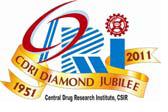 About Authors:
About Authors:
Lila dhar*1,Surender Jalandra
1Seth G. L. Bihani S. D. College Of Technical Education,
Institute Of Pharmaceutical Sciences & Drug Research,
Gaganpath, Sri Ganganagar, Rajasthan 335001
*ldbudania@gmail.com
ABSTRACT
Electron paramagnetic resonance spectroscopy (EPR) is a powerful tool for investigating paramagnetic species, including organic radicals, inorganic radicals, and triplet states. The basic principles behind EPR are very similar to the more ubiquitous nuclear magnetic resonance spectroscopy (NMR), except that EPR focuses on the interaction of an external magnetic field with the unpaired electron(s) in a molecule, rather than the nuclei of individual atoms. EPR has been used to investigate kinetics, mechanisms, and structures of paramagnetic species and along with general chemistry and physics, has applications in biochemistry, polymer science, and geosciences. The use of cavity stabilised Impatt diode oscillators for ESR spectroscopy is discussed in different experimental conditions: i.e. as microwave sources in reflection cavity homodyne spectrometers, and as marginal oscillators in which the oscillator cavity (a TE011 cylindrical cavity) is the observing cavity. The sensitivity of this second configuration has been theoretically evaluated for the case in which the Impatt itself is used as a detecting element and in which an external detector is used. For each situation the sensitivity has been measured with a DPPH sample at various power levels giving a sensitivity which is comparable with the best commercial units.



 About Authors:
About Authors:  About Authors:
About Authors:







.png)


